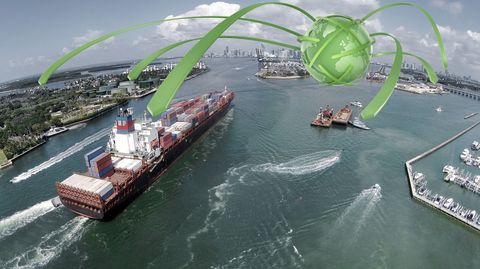Of the numerous multinational trade agreements that are currently being discussed by global governments, it is the Transatlantic Trade and Investment Partnership (TTIP) that is likely to be of greatest relevance to European businesses.
The broad-ranging trade pact aims to forge stronger ties between the 28 member states of the EU and the US, the bloc's largest export market. During these most recent meetings, ministers from the EU and US expressed tentative confidence that progress on the deal can be accelerated, potentially allowing a final agreement to be reached soon.
Should this come to pass, TTIP will create a number of important implications and potential benefits for companies on both sides of the Atlantic that rely on each other for growth.
Objectives of TTIP
The aims of the TTIP are three-pronged, and can be broadly summarised as a push to improve access between the EU and US markets, reduce the amount of bureaucracy involved in transatlantic trade, and to lay down the groundwork for a new legal framework governing business dealings across the two regions.
- Improved access - TTIP is designed to help companies of all sizes to sell their wares overseas more easily, encouraging greater investment between the US and Europe, and making it simpler for businesses to compete for foreign government contracts. This will be achieved through the reduction or outright abolition of tariffs on goods sold, and by clarifying the rules defining a product's country of origin.
- Cutting back red tape - A reduction in the bureaucracy involved in importing and exporting is a key objective of most free trade agreements, and the TTIP is no different. To lessen the inconvenience associated with red tape, efforts will be made to simplify and create greater consistency for EU and US trade rules, while standardising procedures and reducing the cost of compliance - all without undermining necessary protections for consumers and the environment.
- A consistent new legal framework - Much of the TTIP will be concerned with amending current rules, but an equal focus will be placed on ensuring new rules can be created that work for both the EU and US. These will include worker protection laws, new patent and intellectual property regulations, and a refreshed dispute resolution processes, with the ultimate aim of making it easier and fairer to export, import and invest.
Potential effects of the deal
It is hoped that TTIP will drive the creation of new jobs, encourage the growth of international trade, and bolster the influence of both the EU and US in global terms.
European estimates indicate that 30 million jobs in the EU depend on exports, while US firms employ 3.5 million people in the region. The TTIP has the potential to create greater certainty and confidence for those sectors, bringing standards and regulations more in line with each other, and ensuring businesses no longer have to produce different goods for the EU and US markets. Consumers, meanwhile, would see reduced prices and a wider choice of goods, which will ultimately be good for businesses as well.
However, concerns persist - as with the Trans-Pacific Partnership and the Regional Comprehensive Economic Partnership - that the negotiation process has been too opaque, with certain industries worrying about how the legal changes will impact them, while campaigners believe the deal favours big business too strongly. Such concerns will need to be dealt with if TTIP is to be a success.
The current progress
Negotiations over TTIP commenced back in July 2013, but have stalled at various points due to the complexity and contentiousness involved in thrashing out a trade pact of this scale. However, the 12th round of talks - which came to a conclusion on February 26th 2016 - came to a positive conclusion, leading ministers to indicate that a final settlement may possibly be reached before the end of the year.
Once negotiations are concluded, the texts will be published online, and the decision on whether to ratify and implement the new framework will then fall upon EU governments and the European Parliament. As such, TTIP has some way to go before it is passed into law.
Nevertheless, companies that wish to prepare for the prospective introduction of this free trade agreement will need to examine their ability to calculate, store and process origin data, in order to ensure they are compliant with any new laws that may be implemented. The MIC Origin Calculation System (OCS) can be an ideal tool for doing so.






